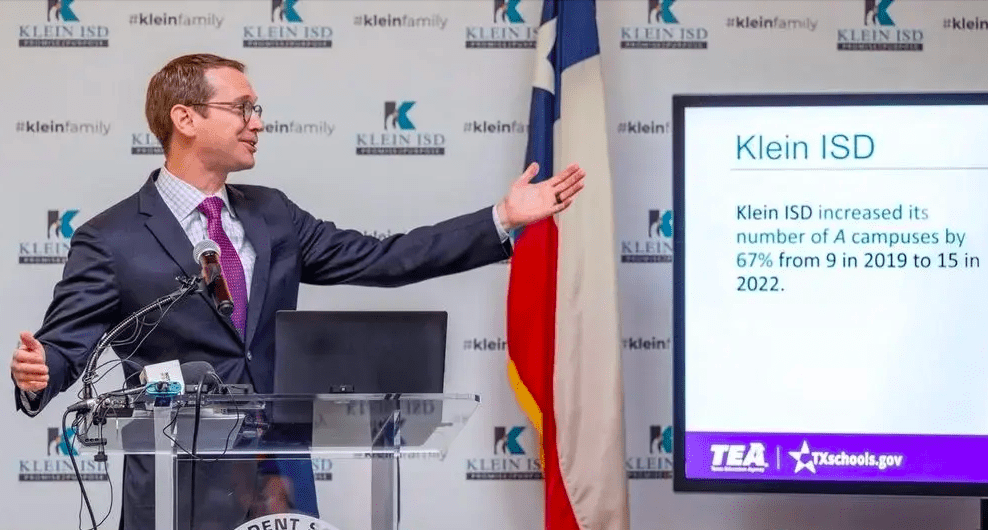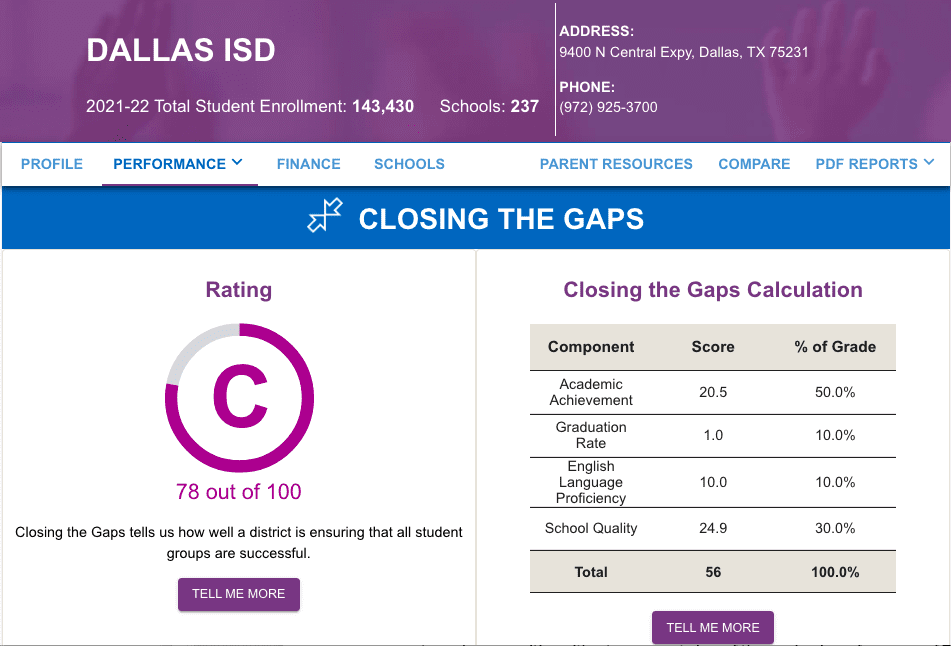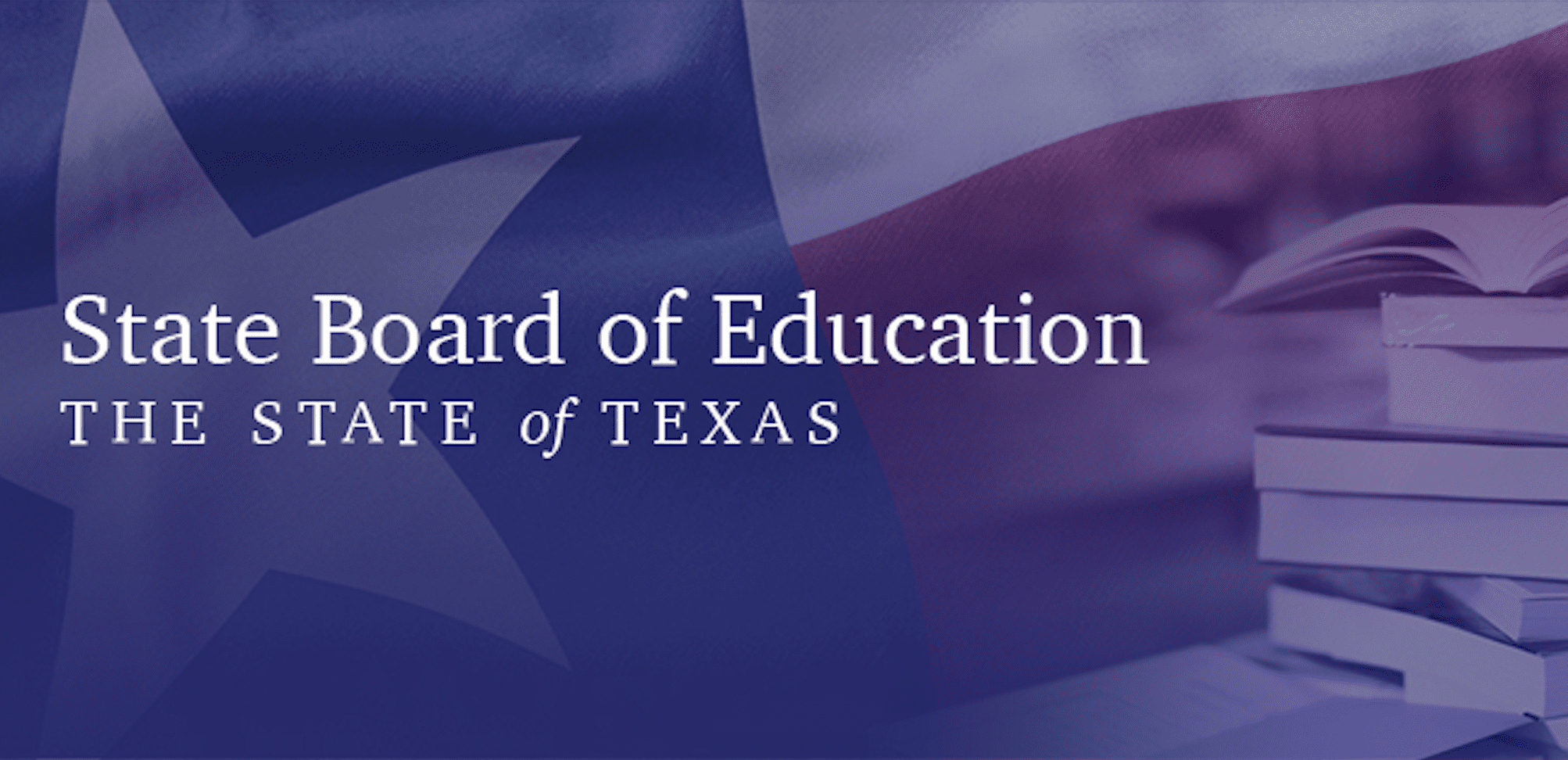UPDATED August 17 with comments from the Texas Education Agency.
Failure is literally not an option this year for Texas school districts and campuses.
New 2022 “A-F accountability ratings” released Monday by the Texas Education Agency only include grades of A-C, while schools that score below a C are assigned a label of “Not Rated: Senate Bill 1365.”
According to TEA, the revised rating system aligns with Senate Bill 1365, passed last year, which authorizes use of the “Not Rated” label if the education commissioner determines it would be “inappropriate” to assign an A-F rating because circumstances make performance indicators “difficult to measure or evaluate and would not accurately reflect quality of learning and achievement for the district or campus.”
Texas Education Commissioner Mike Morath assigned the label to all schools statewide that made failing grades:
This Not Rated: Senate Bill 1365 label was applied when the domain or overall scaled score for a district or campus was less than 70.
Of 1,195 districts and 8,451 campuses rated this year, 42 districts (3.5 percent) and 564 campuses (6.6 percent) received the “Not Rated” label.
Texans for Fiscal Responsibility President Tim Hardin called the ratings change “a typical government solution to a problem.”
“They move to redefine terms and eliminate transparency from parents whose children are in failing schools,” Hardin said. “This report comes on the tail end of one of the worst political bienniums ever for public schools.”
School ratings were skipped in 2020 and 2021, due to COVID policies that kept kids out of classrooms and resulted in devastating learning losses.
TEA reported that in 2022, 25 percent of districts and 33 percent of campuses improved their letter grade from 2019, driven by “significant gains in student academic growth” (one of three elements measured by the grades).
Morath said the results “show our state’s significant investment in the post-pandemic academic recovery of Texas public school students is bearing fruit,” adding that the state’s accountability system “supports high expectations.”
Skeptics question the value of the accountability ratings.
“With each year Morath’s A-F rating system has been in place, he has moved the goalposts and changed the game,” Dallas-area education advocate Lynn Davenport told Texas Scorecard. “The rating system can be manipulated so that certain districts where his pet reforms have been implemented will appear to be successful.”
TEA spokesman Jake Kobersky responded that the process by which districts and campuses were evaluated remained unchanged from 2019 to 2022. He also noted that use of the Not Rated: Senate Bill 1365 label is “applicable to only Ds and Fs during the 2022 accountability cycle,” and that failing districts and campuses were still given scores indicating what grade they would have received, “ensuring transparency.”
The A-F accountability system was established by the Legislature in 2017 to provide “educators, parents, and communities with a transparent view of the academic performance of Texas public schools based on three domains: Student Achievement, School Progress, and Closing the Gaps.”
A look at the performance rating for the Dallas Independent School District, where Morath was a school board trustee before Texas Gov. Greg Abbott chose him to head TEA in 2016, reveals the complicated grading system.
Dallas ISD was assigned an overall “B” rating (86 out of 100), the same score the district received in 2019.
For “Student Achievement,” the district was given a score of 78, a “C” grade.
STAAR testing accounts for 40 percent of the Student Achievement score. For that, DISD received a 73. Yet just 67 percent of Dallas students performed on all STAAR tests at “approaching grade level” or better, with less than half (41 percent) meeting grade level or above, and only 18 percent mastering grade level.
These failing numbers exactly match the statewide averages.
For “School Progress,” Dallas ISD rated a “B” (89 out of 100), based solely on the district’s “relative performance” in student achievement compared to other schools with similar percentages of economically disadvantaged students.
Under “Closing the Gaps,” Dallas ISD scored 56 out of 100 points but was assigned a “C” rating of 78.
In Dallas and across the state, one statistic has seen a steady upward trajectory, even throughout the pandemic: superintendent salaries.
Last year, more than 60 Texas schools’ top administrators received salaries of $300,000 or more; four topped $400,000, and one exceeded half a million dollars.
Recently retired Dallas ISD Superintendent Michael Hinojosa took home a base salary of $365,820 for the 2021-22 school year, according to TEA data.
Ratings and data for all Texas schools and campuses can be found at txschools.gov.
No ads. No paywalls. No government grants. No corporate masters.
Just real news for real Texans.
Support Texas Scorecard to keep it that way!








